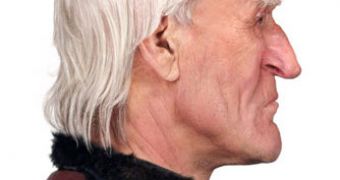The nearly eight century old small city of Frauenburg, or Frombork, as it is now named, located in northern Poland, on the Vistula Lagoon, in the County of Braniewo, the province of Warmia-Masuria, was known to have been the former residence of Nicolaus Copernicus. By comparing a recently-found tooth to two strands of hair previously discovered and known to have belonged to Copernicus, the DNA analysis indicated that they had the same source. Since the tooth was found in a tomb in the cathedral in Frombork, it was deduced that the scientist was buried there.
The hair strands were discovered in a 1518 book by Johannes Stoeffler called Calendarium Romanum Magnum, owned by Copernicus. The bone remains of the 70-year-old man were unearthed from the Holy Cross altar of Frombork's Gothic cathedral and given to the Central Forensics Laboratory at the National Police Headquarters in Poland in order to recreate the face of the person they belonged to. The computer simulation was very similar to known portraits of Copernicus.
"When the bishop of Frombork asked me to begin a search, I was skeptical. It seemed an impossible task. There are hundreds of remains buried in the cathedral," shared Marie Allen from Uppsala University in Sweden, quoted by Discovery. "The two strands of hair found in the book have the same genome sequence as the tooth from the skull and a bone from Frombork," added the researcher. It was somewhat obvious that his remains would be found there, since he was the canon of the cathedral.
Nicolaus Copernicus (1473 – 1543) was among the greatest personalities of the Renaissance, and imposed himself as a prodigious astronomer, mathematician, physician, Catholic cleric, classical scholar, economist, jurist, translator, governor, diplomat, as well as a military leader. But the field of astronomy made his name famous through the ages. In his remarkable book, “De revolutionibus orbium coelestium” (“On the Revolutions of the Celestial Spheres”), he stated that the Earth was not the center of the Universe, as it was believed, instead, it was revolving around the Sun (the heliocentric theory).

 14 DAY TRIAL //
14 DAY TRIAL //